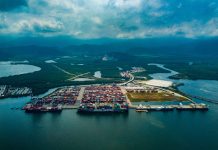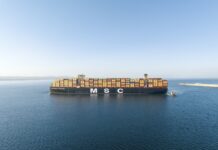
Even though supply chain problems continue to plague the shipping industry, Sea-Intelligence claims that Covid is now entering an endemic phase, rather than a pandemic.
“As such, it is also the time to take stock and contemplate how long it will take the supply chain to normalise,” stated Alan Murphy, CEO, Sea-Intelligence.
The Danish provider of research within the global supply chain industry has therefore analysed one of the disruptions towards stabilisation, which is non-other than schedule reliability.
The system is far out of balance that there is no historical precedent fully describing this situation, according to Sea-Intelligence.
However, the US West Coast labour dispute of early 2015, which creates a realistic baseline, has led to major delays and bottlenecks.

The company defines the period from August 2011 to July 2014 as the pre-labour dispute period and calculates the average baseline reliability on Asia-North America West Coast (NAWC). It then estimates the monthly deviation from this baseline.
“As can be seen in figure 1, the peak impact of the labour dispute was felt in February 2015, with reliability 70 percentage points below the baseline,” noted Murphy.
Following the resolution of the dispute on 20 February, it took eight to nine months for reliability to get back to the baseline. “Even when we adjust for the seasonal impact of the Chinese New Year, there is no material difference to the picture,” Murphy pointed out.
Currently, schedule reliability on Asia-NAWC is just 10.1%, which is not markedly different from the 12.6% recorded in February 2015, suggesting a return to pre-pandemic normality would also be eight to nine months.
On the other hand, vessel delays are much worse now, standing at 15.07 days, over 11.88 days in 2015.
Compared to a pre-pandemic baseline of 2017-2019, the excess delay in December 2021 versus the pre-pandemic baseline was 11.54 days, versus 8.73 days in February 2015 compared to the pre-labour dispute baseline.
“As the 2015 problem was resolved in six to seven months, this means an average reduction in excess delay of 1.25-1.46 days per month,” explained the company’s analysts.
“If the current port and hinterland system manages the same speed of recovery this time, the delays also suggest that resolution would take eight to nine months,” said Murphy and continued, “That said, the market is showing no indication that we have started on the path to resolution.”





